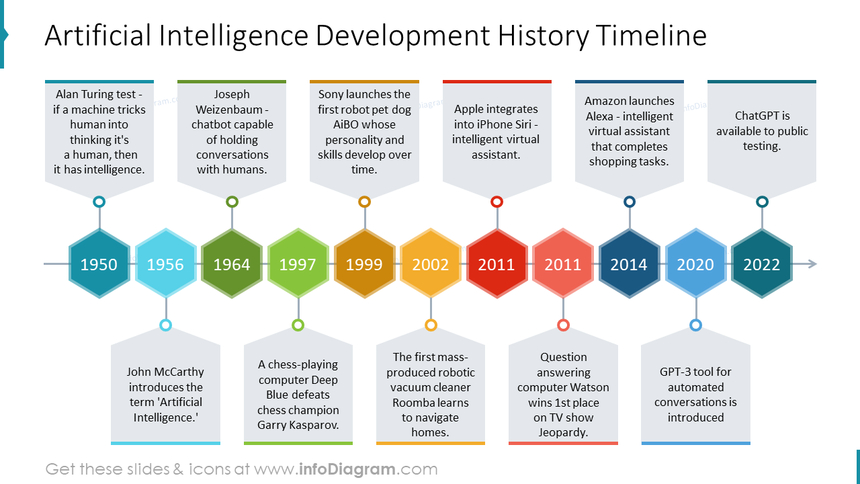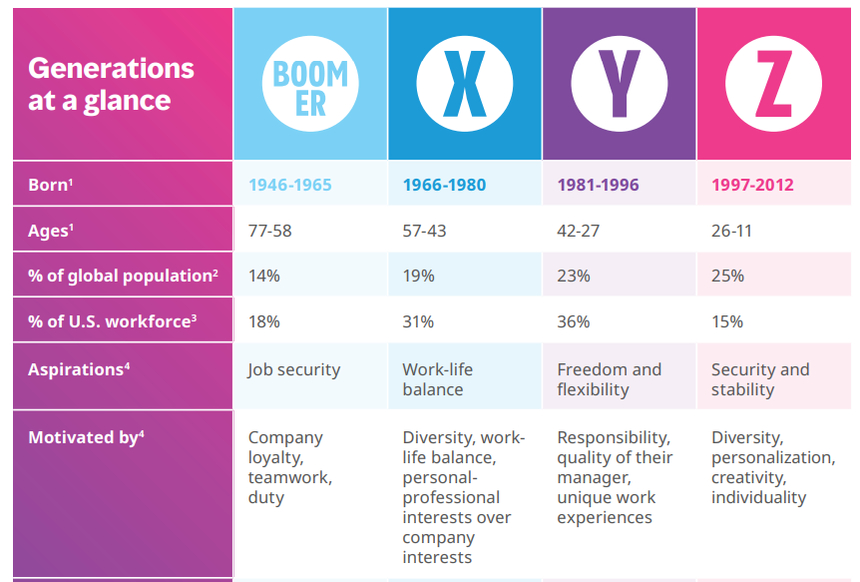New recruiting trends are always emerging and bringing significant transformation to the world of work. The dynamics of the job market, technology, and societal changes are shaping the way organizations attract, select, and retain talent. Human Resources (HR) teams play a pivotal role in adapting to these changes and staying ahead in the competitive world of talent acquisition.
Key Takeaways
- Artificial intelligence (AI) is gaining traction; however, there are laws and regulations when using it for hiring.
- Diversity, Equity, and Inclusion (DEI) is a vital process in recruiting.
- Consider skills and experience over education when recruiting top candidates.
Learn how small businesses are finding top talent and how job seekers are looking for a company that caters to their specific needs using 2025 recruitment trends.
1. Hiring Processes Change as Remote and Hybrid Environments Dominate
Hiring Process Trends Over Time
- 2020: When the COVID pandemic hit, 86% of organizations started to hire and interview job candidates virtually.
- 2023: 69% of employers incorporated video interviews in their hiring process because they found it faster and more efficient.
- 2025: Remote work, though still highly popular, is shifting to remote-hybrid work and, in some cases, a full return to office.
For many businesses across the world, remote environments are the new normal. However, the idea of remote is shifting; it is no longer limited to just working from home but also includes a hybrid environment. This changes how recruiters look for talent. That means they will not just rely on the traditional modes of recruiting talents but will adopt a remote-first approach.
Additionally, although many businesses are pushing for a return to office, or at least a hybrid environment, recruiting still remains a vastly remote process. Although the pandemic and advances in recruiting software have made it easier for companies, even small businesses, to locate and hire quality talent all over the globe, this landscape could change as companies may be looking for individuals who live within a certain geographic location to their offices.
Did You Know? Employees like working remotely. A push to return to the office may result in higher turnover, as employees wish to continue a fully remote work arrangement. For example, Amazon has recently notified its employees that they will be mandated to return to the office five days a week starting January 2025. This was met with overwhelming opposition, as 91% of workers said they were dissatisfied with the announcement.
Virtual Recruiting
Based on data collected through iHire’s 2024 State of Online Recruiting Report, almost half of all employers surveyed either perform some (20%), most (42.5%), or all (25.6%) of their hiring online through online job boards and recruiting platforms.
The survey went on to say that the four most important factors in choosing the right job board are the ability to message candidates through the job board, pre-screening questions, applicant skills assessments, and interview scheduling.
Employers use other forms of virtual recruiting as well, such as social media, company career pages, and school networks.

Percentage of companies that use different methods of recruiting. (Source: iHire)
For small businesses that may be on a limited budget, I suggest using resources that are readily available for recruiting, such as social media. A quick video on platforms like Facebook and TikTok can showcase your business and announce you are hiring. Be sure to include a way to apply and whether it requires in-person work or if remote is an option.
Social Recruiting
Social media/social recruiting software is becoming more prevalent for screening, with a whopping 98% of employers using it to research potential job candidates. Aside from traditional sources for finding talent, such as LinkedIn and Facebook, TikTok and Snapchat have become powerful platforms for companies to build their brands and look for talent, especially Gen Z applicants.
Job seekers typically use social media sites to learn about a company. The top sites employees and candidates visit to review employer brand and reputation are Facebook, LinkedIn, and employer review sites, like Glassdoor. Learn more social recruiting tips in our guide.
If you are looking for the best free applicant tracking software to help you with your social recruiting efforts, I recommend one of our top picks, MightyRecruiter. It is free to use and offers unlimited job postings, an applicant tracking system, and a branded careers page.
2. Data and Analytics Remain Critical to Recruiting Efforts While AI Faces Increasing Scrutiny
Data & Analytics Trends Over Time
- 2010: Artificial intelligence dates back to the 1950s, but really affected hiring efforts around 2010.
- 2020: A Mercer Global Talent Trends Study predicted that recruiters will disappear in the future. It now reports that recruiters will likely only be involved in the interview and offer stages.
- 2025: New laws govern the use of AI in recruiting to ensure discrimination and bias are not present.
Data and analytics will continue to play an important role in the recruiting process in 2025. This is due to a number of factors, including the availability of data, the increasing sophistication of analytics tools, and the growing demand for data-driven decision-making.
AI will be more intuitive when choosing who the best fit is—so much so that companies may favor using these than humans for recruiting. However, there is continuing scrutiny around artificial intelligence and its true impact on hiring. For example, AI can disqualify otherwise qualified candidates because it didn’t find specific keywords listed in resumes.
Predictive Analytics
Predictive analytics can help organizations with determining recruitment budgets, assessing an applicant, and forecasting future hiring needs—and at the center of this is machine learning. Using AI technology, hiring managers can make more accurate predictions based on the data (both historical and current) from different channels, like resumes, HRMS, job descriptions, and social media accounts of applicants.
In fact, according to a 2024 Mercer Global Talent Trends Report, 80% of jobs are likely to be affected by some form of augmented or generative AI. On top of that, a further 19% of jobs will see 50% of their tasks handled by AI.
Some of the things machine learning can analyze are cultural fit, skills to do the job, ability to stay engaged, or even how long the candidate is most likely to stay in the company. Tech giants like Google, have been using it to screen resumes, identify qualified candidates, and predict candidate fit. Google has also developed tools that use machine learning to help recruiters write effective job postings and interview candidates.
Artificial Intelligence
While artificial intelligence has been around for quite some time (first coined in 1956 and became popular in the early 2000s) it has grown substantially in the past several years as a tool to assist businesses with hiring and employee maintenance.

AI has a rich history of development. (Source: InfoDiagram)
AI can save you thousands of man-hours when reviewing resumes. It will automatically search through resumes for specific keywords to determine the relative fit of the candidate’s education, skills, and experience in relation to your open positions.
Additionally, while AI could help mitigate hiring bias—since it does not have any human emotion to judge individuals based on their sex, race, age, and any other protected class—it can also have the opposite effect of learning about biases and reflecting it back to the user. I suggest using caution with AI and always have a real person involved in your hiring process.
Be aware, however, that while AI is here to stay, there are regulations on using AI for hiring. For example, California has enacted regulations around how AI is allowed to interact with private data.
Using recruiting metrics can help you determine if your hiring strategies are effective in helping to attract and hire top talent. These measure sourcing methods, hiring pipeline efficiency, and the performance of your recruiting efforts.
3. Company Culture Leads to Proactive Candidate Engagement
Company Culture Trends Over Time
- 2021: A Future of Recruiting Study showed that over half (52%) of active job seekers cited poor employer culture and reputation as one of the reasons they left a previous job, while 27% said it was the main reason.
- 2023: LinkedIn’s Future of Recruiting report shows that flexible working arrangements is one of the most important—and actually the fastest-growing—priorities for candidates, in addition to traditional priorities, like compensation, work/life balance, and advancement opportunities.
- 2025: Culture will continue to be a top priority for job seekers.
Your company brand and culture showcase your identity, mission, and organizational outlook. By giving insight into how the business works and the community within, potential job seekers can determine if they want to work for a particular organization.
Your mission should focus on what is right for your business and for your employees. Your values should encompass everything your company believes in, and your culture should be employee-friendly and have a little something for everyone. Some culture ideas include:
- Flexible working conditions
- Remote or hybrid environment
- Compensation at or above market value
- Top-notch benefits
- Career site that highlights employer brand, including employee video testimonials
4. Alternative Recruiting Plays an Important Role in Hiring
Historical Alternative Recruiting Trends
- 2017-present: A Statista database shows that the number of jobs altered by augmented reality in 2017 was around 800,000, and it is projected that 2.3 million jobs will be enhanced by AR by 2030.
- 2023: According to Candidate Experience Benchmark Research, candidates felt more engaged when they could ask a chatbot questions during the application process.
- 2025: Technological advances will continue to shape the future of recruiting.
Chatbots
Aside from using social media to build your business brand, you can improve your employee brand with the use of technology. One of these continuing technologies is the use of HR chatbots; AI-powered software programs that can be used to automate a variety of HR tasks, including answering employee questions, providing support, and even onboarding new employees.
Chatbots can improve the employee experience by:
- Providing 24/7 support: Chatbots are available 24/7 to answer employee questions and provide support. This can be especially helpful for employees who work in different time zones or who have questions outside of regular business hours.
- Automating repetitive tasks: Chatbots can be used to automate tasks, such as answering frequently asked questions, scheduling appointments, and processing requests. This can free up HR staff to focus on more strategic tasks.
- Personalizing the employee experience: Chatbots can be used to personalize and provide tailored recommendations and support. For example, chatbots can be used to recommend training courses, connect employees with mentors, or provide information about company benefits.
- Improving employee engagement: Chatbots can provide employees with a way to interact with HR in a fun and engaging way. Chatbots can also be used to provide employees with feedback and recognition.
Augmented Reality
Augmented reality (AR) is a technology that overlays digital information onto the real world, creating an interactive experience. By melding the digital and the real world together, you can create a more positive employee experience. Some of the companies that are already using AR to build their brands include Ike, Deloitte, and Toyota.
AR can be used to create virtual tours of company offices allowing candidates to explore the office space and get a feel for the company culture without having to visit in person. This can be especially helpful for companies that have remote offices or offices in different cities.
While AR might be out of reach for most small businesses, it is something to consider as technology continues to grow. A similar approach could be the use of videos to showcase your offices and company culture.
5. Diversity, Equality, and Inclusion (DEI) Are Top Concerns for Candidates
DEI Trends Over Time
- 2023: More than 76% of job seekers said a diverse workplace was important when choosing a job. In fact, 32% of them would not apply for a job if the company did not have diversity.
- 2023: According to a DEI in the workplace survey for Incfile, nearly 54% of small businesses are making diversity a “key tenant” of their operations.
- 2025: Job satisfaction and happiness will continue to increase as companies embrace DEI efforts and provide an inclusive environment.
Statistics suggest that diversity and inclusion are not just a nice-to-have, but a must-have for companies that want to attract and retain top talent.
Diverse Hiring
It is important to incorporate diverse hiring strategies into your recruiting practices. You can employ diverse practices by updating your job descriptions to promote diversity, posting to diverse job boards, and using a blind hiring process.
It is reported by the Boston Consulting Group’s BLISS Index that 31% of employees are happier and 25% are increasingly motivated when they believe that their company makes DEI a priority.
DEI in Job Descriptions
A vital part of your recruiting efforts is crafting job descriptions that not only explain the open position, but also give insight into your company culture and DEI efforts. Include this information in your “About You” section or as a disclaimer.
To make it clear that DEI is a top priority for your company’s culture, include the following in your job descriptions:
- Focus on the skills required for the position
- Highlight any recent DEI initiatives and their outcomes
- Be mindful to not include any racial or cultural biases
- Emphasize teamwork and collaboration
- Mention flexible working arrangements that can accommodate all types of individuals
- Highlight any benefits that are inclusive, such as floating holidays and/or mental health days
6. Job Applicants Are Getting Overlooked Among Competition
Job Applicant Trends Over Time
- 2016: According to historical talent acquisition trends from CareerBuilder, the average job candidate uses up to 16 sources during their job search.
- 2022: According to a Jobvite report, medical/dental coverage (51%), 401(k) (49%), and work from home flexibility (44%) have all been effective in attracting new candidates.
- 2025: As more people enter the workforce, it will become increasingly difficult to find and hire top talent.
It is no secret that job candidates today face a lot of competition. With the current economic conditions, many people are searching online and vying for the same position.
So, what does this information mean for you? It means that there are multiple sources to find the right candidate. However, you need to know what candidates want and where they are looking for jobs, so you can have a leg up on the competition.
What Candidates Want
In today’s job market, candidates are looking not only for a paycheck but also for job satisfaction. They want to work for a company that will invest in their growth and development, as well as make them feel like they are part of a team and that their work is meaningful.
Current hiring trends show that, depending on generation, company loyalty, diversity, and responsibility are the top things job seekers want from new employers.

Each generation has different aspirations and are motivated by a variety of factors. (Source: EHB Trends Report 2024)
Where Applicants are Looking
The vast majority of job seekers use online job boards to find open positions. Career sites and social media also ranked highly as a source of jobs, while personal connections and print advertisements were much less popular among respondents.
This suggests that employers wanting to reach the widest pool of potential applicants should focus their recruiting efforts on online job boards and websites. Depending on your budget, you can find suitable jobs boards through our best free job posting sites or best paid job boards guides.
7. A Personalized Candidate Experience Increases Your Potential For Qualified Professionals
Personalized Candidate Experience Trends Over Time
- 2015: CareerBuilder revealed that 58% of job applicants have a negative perception of a company if they don’t receive a response after applying.
- 2023: LinkedIn data showed that personalized messages can increase acceptance rates by 40%.
- 2025: Personalizing the candidate experience means better engagement in the hiring process and potential for landing top talent.
A good candidate experience begins before you post your open positions. It’s important to build your company brand so candidates will want to interact with you. Once you post your job ad and begin to receive responses, respond immediately to candidates that you have received their application and will review it.
According to a candidate experience study by CareerArc, 85% of job seekers believe that nobody looks at their resume when they don’t hear back from the company. It is also reported that candidates spend approximately three to four hours preparing and submitting to one job application and 72% of employers spend less than 15 minutes reviewing them.
For candidates that you do not wish to move forward in the hiring process, you can send a job rejection letter to let them know they are not qualified and have not moved on. For those that you do want to consider, keep in constant contact with them by letting them know you are reviewing their resumes and what the next steps in the process are.
8. Skills-based Recruiting Grows Over Educational Requirements
Skill-based Recruiting Trends Over Time
- 2021: The White House announced limits on the use of educational requirements when hiring for IT positions.
- 2022: In a BCG survey, job seekers stated they wished employers would look at skills and experience instead of degrees and certificates.
- 2025: More companies will look at experience and skills over traditional degrees to find top talent.
It used to be that you needed specific educational requirements to land professional positions. However, in the past decade, the focus has shifted to rely more on the skills the candidate brings to the table over their education. For example, someone with 15 years of relevant experience, but lacks a degree, is likely to be more qualified than someone who has the degree and lacks the experience. In fact, according to a Future of Work Trends for 2024 study by Gartner, employers are getting rid of the paper ceiling (the need for degrees) and relying more on workers with alternative credentials.
According to a TestGorilla State of Skills-based Hiring 2024 report, 81% of employers used some form of skills-based hiring in 2024 (up from 73% in 2023 and 56% in 2022), and 95% agree that it’s the dominant recruitment trend of the future.
Once hired, you can help your new hires stay educated with upskilling and reskilling initiatives. This trend is a good way to expand candidate pools for small businesses or startups who are struggling to find candidates for more niche roles.
Bottom Line
The data collected on staffing trends provides valuable information for you to consider when making decisions about your hiring processes. The current hiring market trends appear to be moving toward a more efficient and cost-effective use of technology in the recruiting process. This shift could save you time and money while still maintaining a high quality of applicants.

